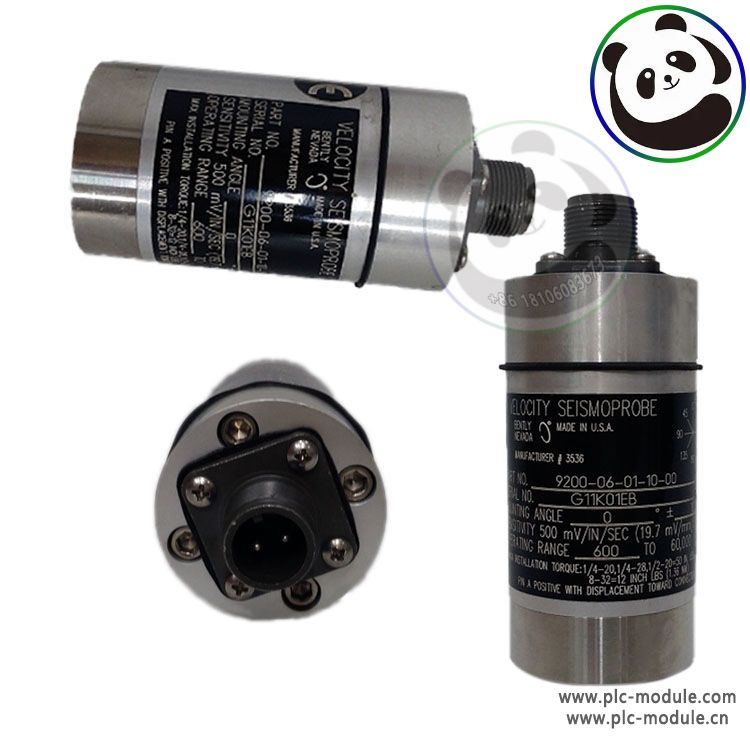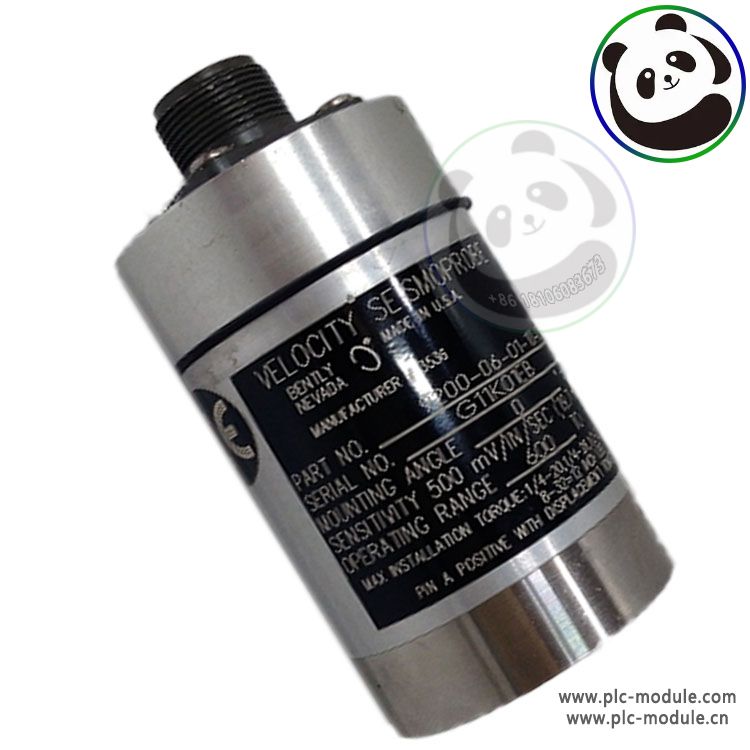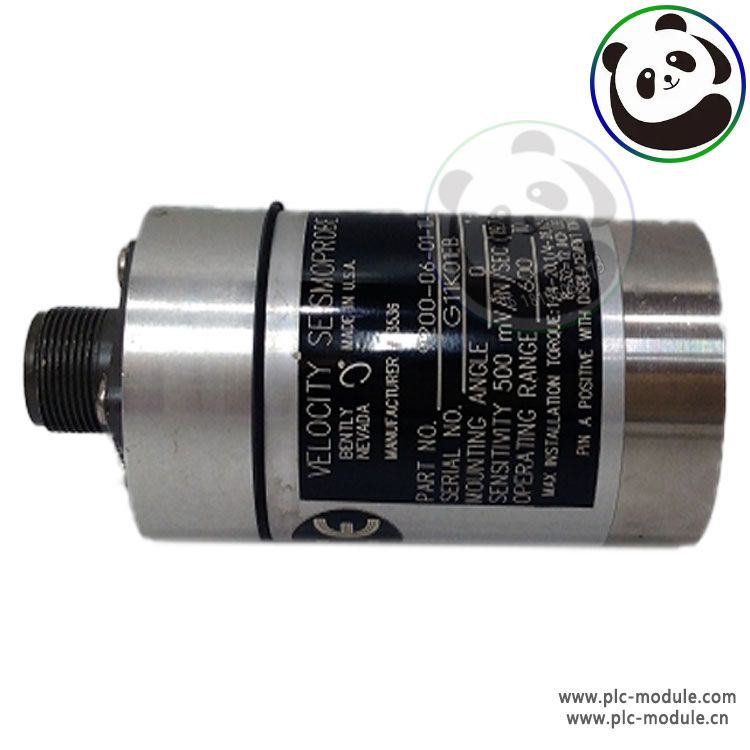.Many products are not yet on the shelves please contact us for more products
.If there is any inconsistency between the product model and the picture on display, the model shall prevail. Contact us for the specific product picture, and we will arrange to take photos in the warehouse for confirmation
.We have 16 shared warehouses around the world, so please understand that it can sometimes take several hours to accurately return to you. Of course, we will respond to your concerns as soon as possible
Bently 9200-06-05-05-00 velocity transducer sensor 920006050500.The Bently 9200-06-05-05-00 is a velocity transducer or sensor used for continuous monitoring, periodic measurements, testing, or fault diagnosis. It is a two-wire sensor that does not require additional protection due to its excellent corrosion resistance.The sensor offers 20 mV/mm/s (500 mV/in/s) with a ±5% error when correctly terminated and oriented at the angle of calibration. Transverse sensitivity is 10% or less of axial sensitivity, and it can withstand mechanical shocks up to 50 g peak along the non-sensitive transverse axis.The 9200 model is suitable for use in various industries such as electric power, petroleum, chemical, metallurgical, and scientific research units .

The Bently 9200 has a standard cable, which is a 9571 2-core twisted-pair shielded 22 AWG (0.5 mm2) cable with one end having two socket moisture-proof negative connectors and the other end having terminal wire connectors.The Bently 9200-06-05-05-00 model can be purchased from Baker Hughes/Bently Nevada or Artisan Technology Group [bakerhughes.com, 3]. To use the sensor, it needs to be correctly terminated and oriented at the angle of calibration to obtain the expected accuracy. The transducer's sensitivity is axial, which means it is sensitive to the direction of the vibration. Therefore, it is crucial to install the sensor correctly to ensure the correct orientation and alignment.

There are many other velocity and acceleration sensors available in the market, each with its unique features, advantages, and disadvantages. Some of the commonly used sensors are:
- Piezoelectric sensors: These sensors generate an electrical charge when subjected to mechanical stress or vibration. They are sensitive and can detect high-frequency vibrations. However, they cannot measure low-frequency vibrations and are susceptible to temperature changes and electromagnetic interference.
- Capacitive sensors: These sensors use the change in capacitance due to the movement of a conducting object to measure the vibration. They are sensitive and can detect low-frequency vibrations. However, they are susceptible to temperature changes and electromagnetic interference.
Eddy current sensors: These sensors use the change in impedance due to the movement of a conducting object to measure the vibration. They are immune to temperature changes and electromagnetic interference. However, they are not suitable for high-speed applications and are not as sensitive as piezoelectric or capacitive sensors.

Bently 9200-06-05-05-00 is a velocity sensor used for continuous monitoring, periodic measurements, testing, or fault diagnosis. It is a two-wire sensor that does not require additional protection due to its excellent corrosion resistance. The sensor offers 20 mV/mm/s (500 mV/in/s) with a ±5% error when correctly terminated and oriented at the angle of calibration. The 9200 model is suitable for use in various industries such as electric power, petroleum, chemical, metallurgical, and scientific research units. To use the sensor, it needs to be correctly terminated and oriented at the angle of calibration to obtain the expected accuracy. There are many other velocity and acceleration sensors available in the market, each with its unique features, advantages, and disadvantages.
| Bently 9200-06-05-05-00 velocity transducer sensor 920006050500 |
| www.plc-module.com | XiongBa Industrial Control | Panda |